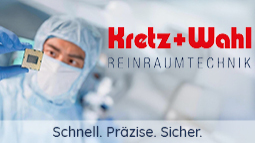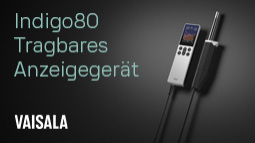Modern analytical techniques are indispensable in the food industry
Example: rapid tests detect the presence of mycotoxins on the spot
Anuga FoodTec exhibits concentrated know-how and modern technologies for all areas of food and drinks production.
Anuga FoodTec - the international supplier trade fair for the food and drinks industry - will present an up-to-date and comprehensive overview of new technologies, facilities and supplier components for all areas of production from 24 to 27 March, 2015 in Cologne. In focus at the trade fair are modern analytical techniques which can, for example, help food producers to quickly and economically detect harmful metabolic products of mold, or so-called mycotoxins. Quick analysis and easy handling - ideally at the processing location - are of central importance in these new methods. As part of the focal topic "Food Safety" Anuga FoodTec will present countless topics and solutions within the field of analytical techniques, and with this, will communicate the latest methods and know-how to meet industry demands.
Mycotoxins include aflatoxins, ochratoxins, ergot alkaloids, fusarium toxins, patulin and alternaria toxins. Over 350 mycotoxins originating from over 250 species of mold have now been discovered. Even small quantities of mycotoxins can be toxic to people and animals. Symptoms of poisoning can include liver and kidney damage, weakening of the immune system, damage to the skin and mucus membranes and hormonal disturbances such as fertility disorders. In addition, some mycotoxins are carcinogens and some can lead to genetic defects.
It is for this reason that food products are prohibited from containing, for example, more that two micrograms of aflatoxin B1 per kilogram. We often receive rapid warnings of contaminated specimens of figs, nuts, spices and corn from the European Commission. Boiling, baking or frying foods does not help to kill off the heat-resistant substances. Tracking down this 'evildoer' is therefore compulsory for food producers - they must prove through tests that their products do not contain any of the poisonous substances.
Taking control with the test strip
Analytic methods sensitive enough to detect mycotoxins have been around since the 1970s. The challenge today lies in developing appropriate procedures for on-site controls, in order to quickly and simultaneously detect mycotoxins in food products. Although laboratory testing is very exact, it is also costly and time-consuming, and rapid-response methods provide results in a shorter time. Immunological procedures such as ELISA (enzyme-linked immunosorbant assay) and lateral flow tests, as well as chemical tests such as fluorimetric testing, offer more cost-effective methods of identifying aflatoxins and are helpful in routine daily work. With these tests even untrained staff can identify contaminated specimens without the need for laboratory conditions.
The "lateral flow test", for example, can detect individual mycotoxins in just five minutes. In principle, the test system works like a rapid response test strip: if aflatoxin is in the sample, a test band will become visible, if not, it will remain unchanged. This provides a reliable test against the toxins, not only in corn and grain, but also in nuts, figs and, to a certain extent, spices. Another advantage is that the test can be used without any technical equipment, even directly upon delivery of raw produce. The ELISA method is just as fast and cost-effective: this can detect fusarium toxins in barley, oats, rye and corn. The microtiter plate test finds the substances on the basis of antigen antibody reactions in less than 20 minutes and allows for a high sample flow rate.
The analytic techniques of tomorrow can stop mycotoxins in their tracks
The legally defined maximum values for mycotoxins still need to be verified using reference methods. Rapid tests serve only to provide an estimation of the toxic content in food products. More precise results require detection through high-performance liquid chromatography or mass spectrometry. New techniques should provide solutions: scientists want to trace the substances using infrared laser spectroscopy. The European Commission's mycospec project is based on new laser diodes with an emission wavelength in the middle infrared range. "They can be tuned across a wide spectral range, meaning the mycotoxins' complex signatures can be captured in infrared" explains Prof. Dr. Boris Mizaikoff, head of the Institute for Analytical and Bioanalytical Chemistry at the University of Ulm. Using this measuring technique the samples can be prepared quickly on site, which simplifies monitoring limit values. The project group hopes to have the prototypes ready by 2015. Just as practical is the project facilitated by the food industry's research group to develop a biosensor array, which should be able to detect all relevant mycotoxins in grain and grain products. The biochip detects up to five mycotoxins in under 11 minutes.
In future, the maximum values for mycotoxins in food products may be further reduced. To this end, the business consultants AFC Consulting published a study "Mycotoxin Analytics" in 2013 in which they investigate the problem of harmful substances in grain and products containing grain. 55 percent of food producers surveyed agree that guaranteeing safe, mycotoxin-free products will become increasingly important.
Koelnmesse GmbH
50532 Köln
Germany








